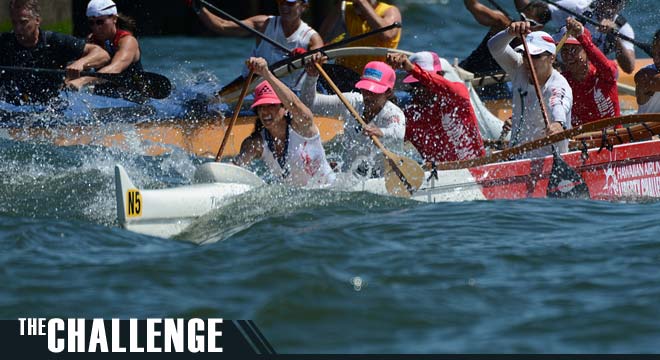The Challenge: Water Quality

“Since the passage of the Clean Water Act, water quality has improved dramatically and over the past several decades, citizen activism has made it increasingly unacceptable for government and industry to treat our rivers as dumping grounds.”
– Riverkeeper
Will my skin peel off? Will I grow a third eye? Just how nasty IS the water?
These are questions that are always asked whenever we get someone new to our waters. Unlike the rest of the articles posted in The Challenge Series, water quality is one that is very much NOT a challenge!
There was a time when the Hudson River was pretty much a dead zone. The local waterways were treated as dumping grounds for all kinds of industrial and human waste and it got to the point that bacteria and algae took up so much of the oxygen in the water that it could no longer support wildlife.
The passage of the Clean Water Act in 1972 put our surrounding waterways on the path to being restored to their original health. Significant amounts of money were used to build fourteen sewage treatment plants in New York City to treat all water before it enters the river. Industrial waste that has settled into the sediment is slowly being dredged and cleaned up.
 While it is a long and arduous process, the results are definitely apparent. It is not uncommon to see people fishing in the waters around Manhattan again. Crews may not expect it either until they run into a fishing line. The pilings of many of the old pier structures on our waterways are deteriorating only because the water is healthy enough again to support the marine boring organisms that eat away at old wood pilings. And, while uncommon but no longer unheard of, marine mammals are spotted in our local rivers. Myself and many other New York Outrigger members have seen seals, manatees and dolphins come up to our canoes.
While it is a long and arduous process, the results are definitely apparent. It is not uncommon to see people fishing in the waters around Manhattan again. Crews may not expect it either until they run into a fishing line. The pilings of many of the old pier structures on our waterways are deteriorating only because the water is healthy enough again to support the marine boring organisms that eat away at old wood pilings. And, while uncommon but no longer unheard of, marine mammals are spotted in our local rivers. Myself and many other New York Outrigger members have seen seals, manatees and dolphins come up to our canoes.
Water quality readings by Riverkeeper, a local water quality advocacy group, has shown that the waters around Manhattan are far cleaner than most other major metropolitan areas. In many cases, the waters around New York City with its eight million residents are far cleaner than the waters around cities with a much smaller population.
There are still things to look out for, though. Our sudden and torrential rains during the summer often overload the water treatment system. At those times, overflow valves are opened to allow the stormwater mixed with raw sewage to enter the waters. However, as mentioned in my Tides and Currents post, the waters that surround us are part of a dynamic estuary of strong water flows. Two tide cycles effectively flush the area each day and the waters are generally clean again within 24 hours.
There still is a lot of work to do but the waters around New York are largely safe for recreational use. One of the challenges for New York Outrigger as an organization is to break the centuries old stigma that the water is nasty. Some remain unconvinced but the majority who do now realize the great recreational opportunities our local waterways have to offer.
So the ultimate question that visiting paddlers always ask…Do you do water changes in the Hudson?
Of course we do! Come on in. The water is fine.
The Challenge Series is written by New York Outrigger Head Coach Keith Tsang. His insights are drawn from over ten years of paddling and steering the New York and New Jersey waterways.
Category: Blog, Home, Homepage News, The Challenge







The Non-Challenge: Water Quality! Learn more about the waters of the @HawaiianAir #LibertyChallenge. http://t.co/7lJdjli6mq